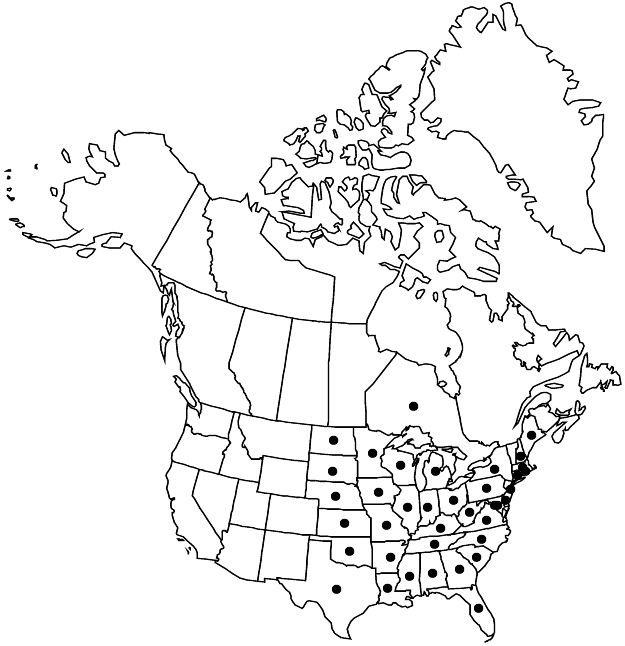Euonymus atropurpureus
Hort. Bot. Vindob. 2: 55, plate 120. 1772/1773.
Shrubs or trees to 8 m. Stems erect; young braches terete, not corky winged. Leaves deciduous; petiole 6–20 mm; blade elliptic, oval, ovate, or obovate, 5–16 × 1–3 cm, base broadly cuneate to rounded, margins serrate, apex acuminate. Inflorescences terminal or axillary, 7–20-flowered. Flowers: sepals 4; petals 4, dark purple, nearly triangular, obovate, or oblong, 1.5–2 × 1.2–1.5 mm; stamens 4; ovary smooth. Capsules pinkish purple, obovoid, 11–13 × 15–17 mm, deeply 4-lobed, lobes clearly connate, surface smooth. Seeds ellipsoid, 5–7 × 4–5 mm; aril red. 2n = 32.
Phenology: Flowering spring–summer; fruiting late summer–fall.
Habitat: Rich moist woods and thickets, hillsides.
Elevation: 0–400 m.
Distribution

Ont., Ala., Ark., Conn., Del., D.C., Fla., Ga., Ill., Ind., Iowa, Kans., Ky., La., Maine, Md., Mass., Mich., Minn., Miss., Mo., Nebr., N.H., N.J., N.Y., N.C., N.Dak., Ohio, Okla., Pa., R.I., S.C., S.Dak., Tenn., Tex., Va., W.Va., Wis.
Discussion
Euonymus atropurpureus is widely cultivated and has become naturalized in New England (Connecticut, Maine, Massachusetts, New Hampshire, and Rhode Island). The root bark is used medicinally.
Selected References
None.